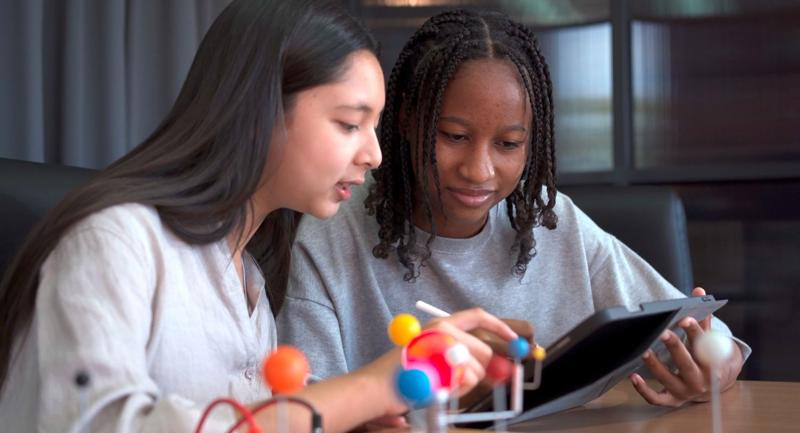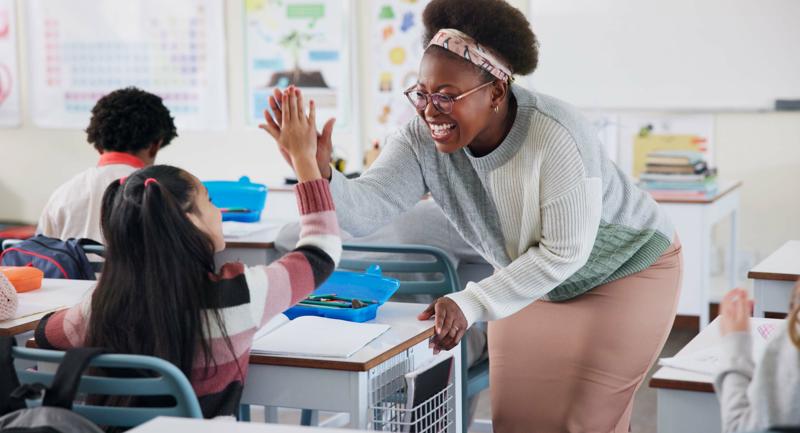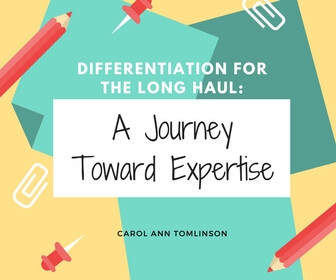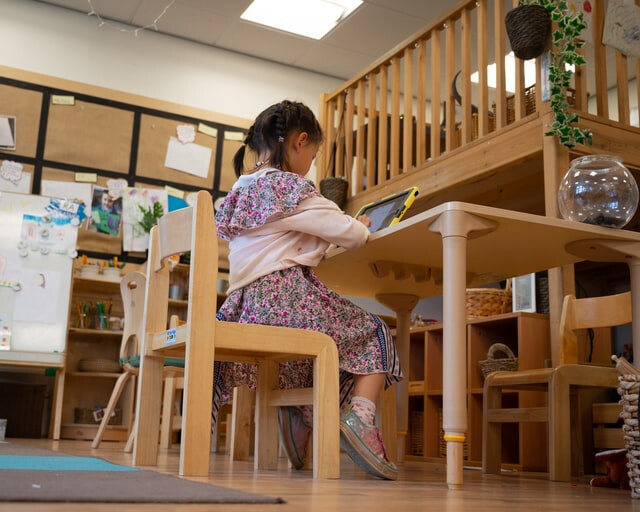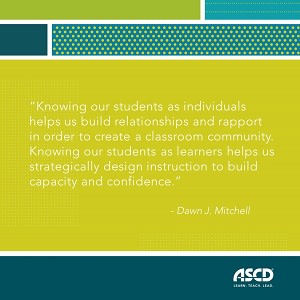What do your classroom discussions sound like—and more importantly—feel like, for students? Shaping experiences for learners to have rich discourse and engage in authentic conversation with one another is an important part of creating a student-centered learning environment, according to Opal Davis Dawson, an ASCD faculty member and retired elementary school principal. But these discussions don’t happen magically, especially after the last few years of inconsistent in-person class time, she added.
“Classroom discussions and working collaboratively are new for many students,” Dawson told a room of educators during a presentation at ASCD’s Annual Conference in Chicago. “Teachers need to be clear about their expectations and proactively teach students how to engage in this new learning.”
Rich Conversations vs. Conventional Conversations
The first step to more meaningful talk—which should be infused across the curricula and across grade levels—is to differentiate between conventional discourse and rich discourse, Dawson said. Conventional discourse is predominantly teacher-driven; students don’t have opportunities to build on peers’ thoughts, and the goal is to have students give the correct response in the shortest amount of time.
In contrast, Dawson explained, rich conversation includes divergent responses with multiple possible answers, where students co-construct, drive, lead, and build on the conversation, and the goal is to have students articulate their strategic thinking. It’s also driven by social-emotional learning principles, including self-awareness (identifying your role and responsibilities during academic discussions), social awareness (listening attentively to others’ ideas), and self-management (expressing thoughts in a constructive way).
Once educators identify the elements of conversation they should be aiming for, the next step is self-reflection. Dawson posed questions to encourage thinking about the climate and content of current classroom conversations, including:
- Is the emphasis on giving the right answers rather than processes and strategies?
- Is discourse carried by the voices of a few where the others are reluctant to contribute?
- Do you often provide opportunities for students to lead the discussions?
- Do you send non-verbal signals to students based on your perception of their ability to give a quick or correct response?
- Does your lack of comfort with content lead you to pose more close-ended questions?
After reflecting on these questions, it’s time to plan how you will facilitate these discussions. Dawson provided five steps that educators can use to engage students in rich classroom discussion.
Five Steps to Deep Discussion
1. Start lessons with an icebreaker or quick check-in.
“This is a great way to get students to connect,” Dawson said, as these tactics build a sense of community and provide a more accessible entry point for students to share ideas. One idea would be to have students identify two emojis that best represent how they feel that day and why, and then turn and talk with a partner.
2. Communicate your expectations for participation and behavior.
An important teacher expectation is the creation of a safe discussion environment. Dawson recommends establishing clear SEL-informed norms (or ground rules for discussion) that students help to brainstorm—such as asking for help when needed, listening with empathy to others’ ideas, and asking questions based on careful listening. For their part, teachers can “model what we want students to do during the actual discussion,” by listening for students’ key ideas and restating them clearly when comments lack focus, encouraging students by frequently offering authentic praise, and keeping the conversation short enough to prompt meaningful reflection, said Dawson.
3. Provide students with an agenda and a list of discussion questions ahead of time.
While a discussion agenda might seem like a simple step, it’s one that makes students feel more comfortable and ready to engage, especially those who are hesitant to participate. Teachers might offer students an agenda handout explaining how the discussion fits into the current unit of study and questions to think about ahead of time, so students can prepare some talking points. An agenda also sets the context for questions, as students think about how a discussion connects to the events shaping their world or curriculum, the skills and techniques they are working on during the discussion, and the kinds of multimedia content—articles, videos, images—that they might be using as the basis for discussion.
Questions can also relate to content areas including science (“How do we decide what to believe about a scientific claim?”), math (“What do good problem-solvers do, especially when they get stuck?”), or English/Language Arts (“How do effective writers hook their audience?”)
4. Provide participation and discussion techniques.
For students to make a meaningful contribution to a class discussion, “they have to have a good place to start,” Dawson told conference participants. Instructional strategies to facilitate this could include:
- Sentence stems (“The text is about …,” “My partner pointed out…,” “We agreed/disagreed with…”)
- Asking clarifying questions when a student refers to something not everyone understands (“I would like to ask a clarifying question about …”)
- Connecting ideas that ask students to consider how two or more ideas from the discussion are connected (“I see a connection between ___ and _____.”)
- Building on ideas (“I would like to build on ____’s idea about ____.”)
Dawson also noted that The Teacher Toolkit has free strategies for tactics like Think-Pair-Share and sentence stems students can use as a scaffold.
5. Ask students to assess their performance.
As educators wrap up a discussion, student reflection on how they think they’ve done can lead to stronger conversations in the future. “Let students know at the beginning that they’ll have an opportunity to self-assess at the end,” said Dawson. Teachers can do this one of two ways: by having students self-assess on one aspect of classroom discussion (e.g., “How well did I follow the norms?”) or self-assess on the content of the discussion itself (e.g., “How well do I know this math content based on the discussion we had?”).
A few assessment question/prompts Dawson recommended include:
- Let’s reflect: What parts of the discussion did you find most interesting? What parts were easy or what part of the discussion was a challenge?
- How would you explain to a friend who missed class what our lesson was about?
- Describe in 10 words what you learned today.
With these tactics, Dawson said, educators can foster discussions that will increase student learning in every skill area, regardless of what subject or age they teach.
Opal Davis Dawson is chief education officer of Best College Math and an ASCD faculty member based in Louisville, Kentucky. Follow @opalddawson on Twitter. To catch her session at the ASCD Virtual Annual Conference, April 20–22, 2022, register here.




